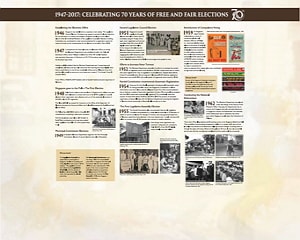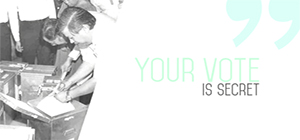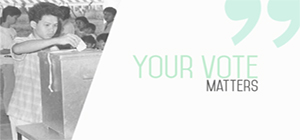-
1946 - Establishing the Elections Office
Singapore was established as a separate crown colony. The Legislative Council Election Ordinance was passed to provide for limited elections. For the first time in its history, the people of Singapore would go to the polls to elect 6 of the 13 Unofficial Members of the Legislative Council. An Elections Drafting Committee was constituted to make recommendations for a registration system for voters and draw up the constituencies for the election to be held in March 1948.
-
1947
In preparation for elections, the Elections Office (currently the Elections Department) was established under the Colonial Secretary’s Office. Senior Malayan Civil Service officer Mr Gerald Hawkins (left) was appointed Supervisor of Elections, and Mr M Ponnuduray (right) was appointed the Assistant Supervisor.
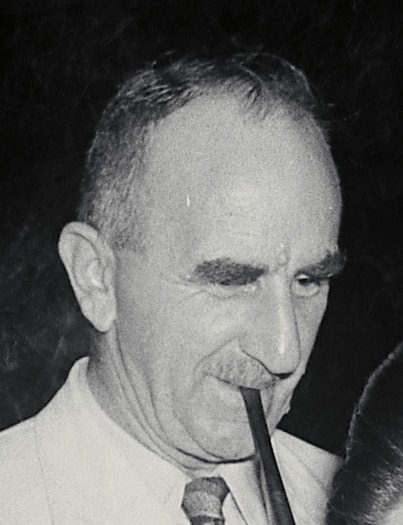
The Straits Times Ⓒ Singapore Press Holdings Limited
Gerald Hawkins
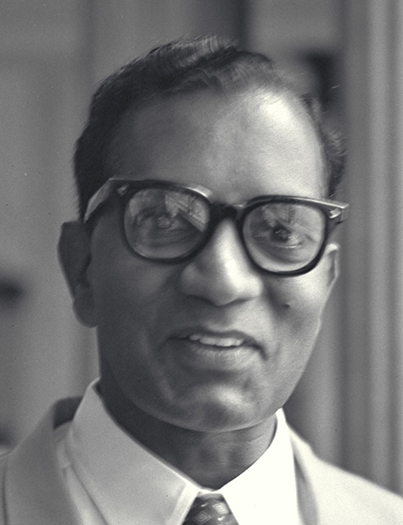
The Straits Times Ⓒ Singapore Press Holdings Limited
M Ponnuduray
Hawkins publicly declared that the Elections Department was "non-partisan and completely colourless and was only concerned with ensuring that every eligible voter had an equal chance to vote. It was completely without party affiliations of any kind and the ballot would be secret, as in any democratic country." (The Straits Times, 14 October 1947)
From 1948 to 1951, Mrs ASM Hawkins (wife of Gerald Hawkins) became Supervisor of Elections.
-
1948 - Singapore goes to the Polls - The First Election
Only British subjects who had lived in Singapore for at least one year were allowed to contest and vote in the 1948 Legislative Council election. Voter registration was voluntary and out of the potential electorate of 200,000, only 22,395 registered.
The electoral roll was opened for inspection at the offices of the Supervisor of Elections, Secretary for Economic Affairs, the Colonial Secretariat, the Rural Board and all post offices.
On Polling Day, only 14,126 went to the polls. All 4 constituencies comprising 6 seats were contested.
The first by-election was held on 16 October in Rural West constituency as the seat was vacated when Legislative Councillor SC Goho passed away in July.
-
1949 - Municipal Commission Elections
In April, the Elections Department organised the first Municipal Commission Election. A second election was held in December.
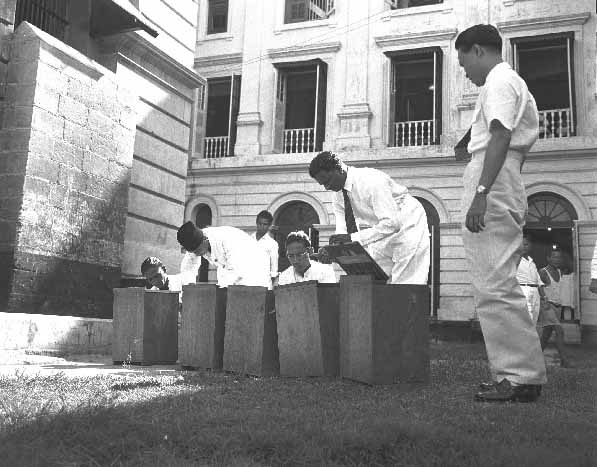
Ministry of Information and the Arts Collection, courtesy of National Archives of Singapore
Preparation for the destruction of ballot papers at Empress Place, 1950.
-
1951 - Second Legislative Council Election
Singapore's second Legislative Council election was held in March, with 22 candidates vying for 9 seats. Once again, voter registration and turnout were low. Only 52% of the 48,155 eligible voters cast their ballots. In the run-up to the election, the Elections Department conducted an extensive check on the voters' lists, engaging about 100 temporary staff to go house-to-house to check on voters’ eligibility. However, this did little to encourage more people to vote.

Ministry of Information and the Arts Collection, courtesy of National Archives of Singapore
Voters lining up during the second Legislative Council election, 1951.
-
1952 - Efforts to Increase Voter Turnout
The Elections Department redoubled its efforts to increase the number of registered voters from 46,944 to 100,000. Letters were sent to voters who were registered for City or Legislative Council elections. Despite these efforts, 4 out of 5 potential voters did not respond. Only about 15,000 election registration forms were returned. In 1952, the total number of registered voters stood at 71,942.
-
1954 - Rendel Constitution recommends Automatic Registration
Governor Sir John Nicoll appointed a Constitutional Commission under Sir George Rendel to study how Singapore's Constitution could be reformed to move the Colony towards self-government. One of its recommendations was to institute a system of automatic registration of voters. This proposal was accepted and from 1954, voters were automatically registered. This immediately raised the number of voters from about 76,000 to 300,299 in 1955. The practice of automatic registration continues till today with the Elections Department ensuring that Registers of Electors (known previously as electoral roll) are kept up to date.
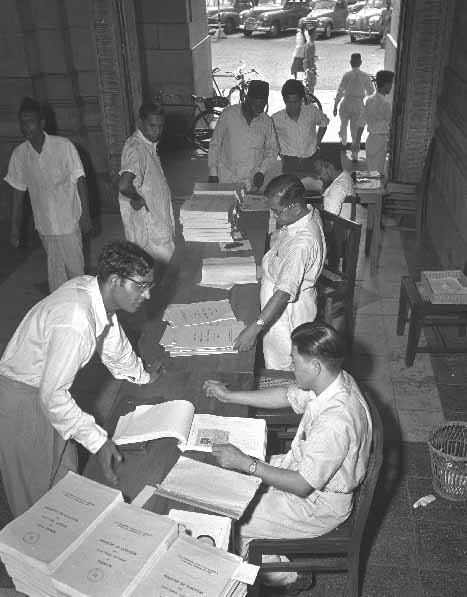
Ministry of Information and the Arts Collection, courtesy of National Archives of Singapore
Members of the public checking the electoral roll at the General Post Office, 1954.
-
1955 - The First Legislative Assembly Election
The Rendel Commission also recommended that the old Legislative Council be reconstituted as a mainly elected assembly of 32 Members of which 25 were to be elected. Mr George G Thomson, who was appointed Supervisor of Elections, stated that these elections - the most massive ever - would cost about $1 million to conduct. Some 1,500 persons were trained to conduct elections.
Even though voter registration was automatic, voting was not compulsory. Only 156,324 of the 300,299 eligible voters actually cast their ballots.
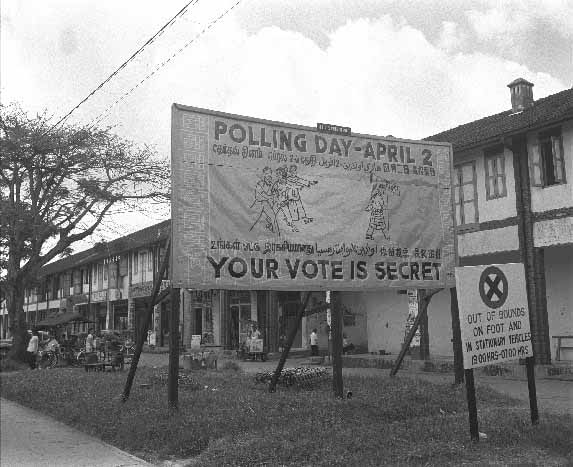
Ministry of Information and the Arts Collection, courtesy of National Archives of Singapore
Legislative Assembly election hoarding showing information on Polling Day, 1955.
-
1959 - Introduction of Compulsory Voting
As Singapore edged towards independence, a series of constitutional talks held between 1956 and 1958 led to most internal affairs being placed in the hands of the local elected representatives. In 1959, the legislation was amended to make voting compulsory. As a result, voter turnout hit a remarkable 92.9% with 527,919 of 586,098 voters turning up to vote. Compulsory voting, coupled with constant efforts to make it convenient for voters to exercise their voting rights, have contributed to high voter turnout till today.
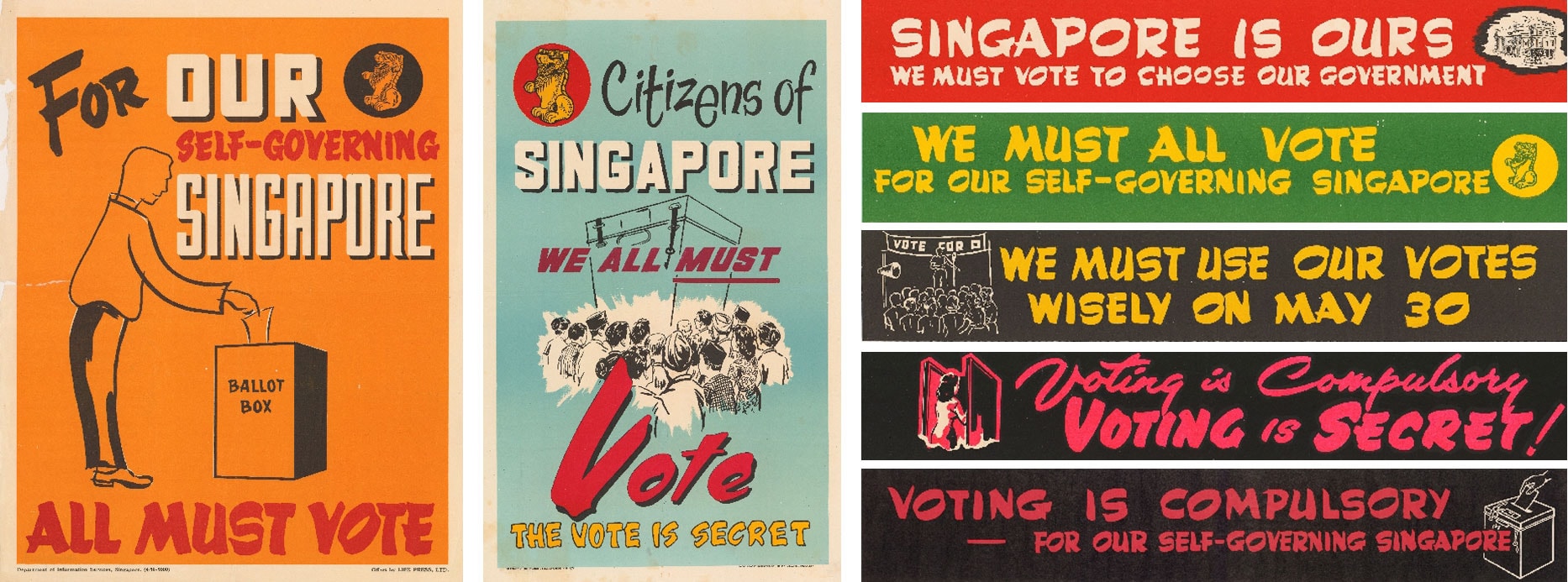
Department of Information Services, Chief Secretary's Ministry (1959) Collection, courtesy of National Archives of Singapore
Ministry of Information, Communications and the Arts Collection, courtesy of National Archives of SingaporePublic education posters used at the Legislative Assembly Election, 1959.
-
1962 - Conducting the National Referendum
The Elections Department was placed under the charge of the Deputy Prime Minister’s Office. That year, the Department was to conduct the first-ever and only national referendum in Singapore’s history on 1 September. The objective of the Referendum was to determine the terms upon which Singapore would enter the Federation of Malaysia.
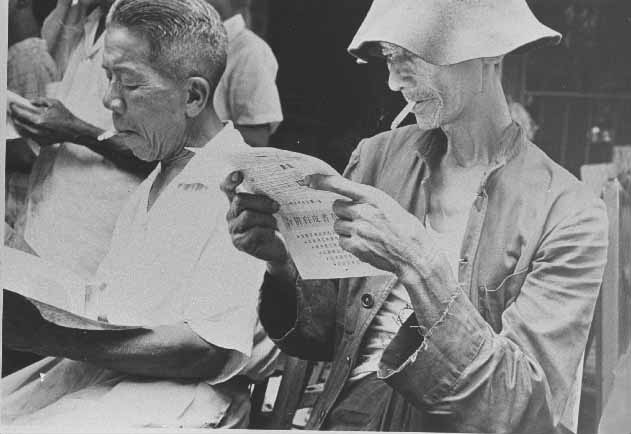
Ministry of Information and the Arts Collection, courtesy of National Archives of Singapore
Two individuals studying the three options of merger during the National Referendum, 1962.
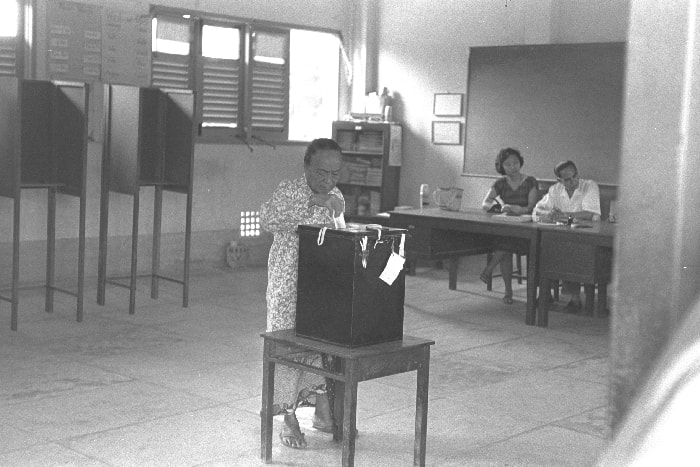
Ministry of Information and the Arts Collection, courtesy of National Archives of Singapore
Casting of vote during the National Referendum, 1962.
There were 345 polling stations and 1 counting centre at the Singapore Badminton Hall. This centralised vote-counting arrangement resulted in a massive traffic jam and the last ballot box arrived at the Badminton Hall only around midnight. Counting went on through the night, with many officers working almost 36 hours. It was only around 11 am the next day that counting was completed and the result could be announced.
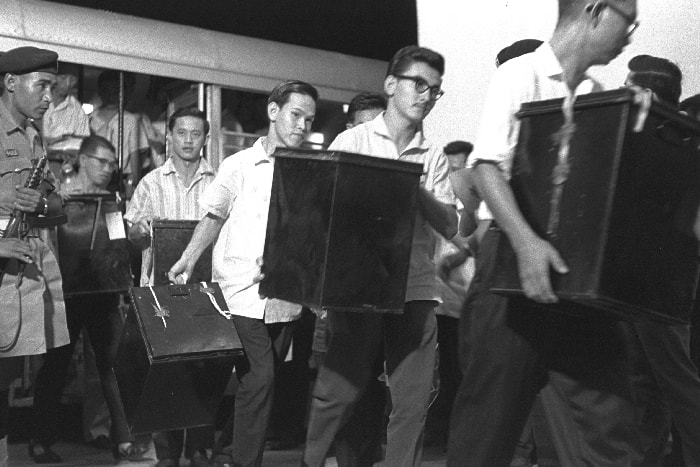
Ministry of Information and the Arts Collection, courtesy of National Archives of Singapore
Election officials with ballot boxes arriving at Singapore Badminton Hall which was the designated counting centre for the National Referendum, 1962.
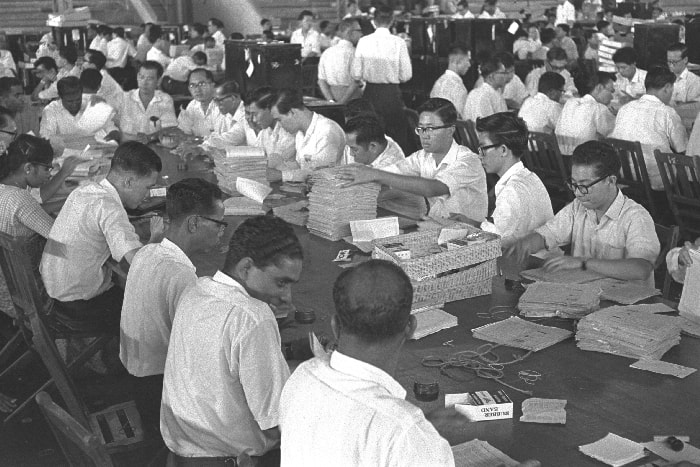
Ministry of Information and the Arts Collection, courtesy of National Archives of Singapore
Counting of ballot papers at the Singapore Badminton Hall for the National Referendum, 1962.
-
1963 - Legislative Assembly Elections 1963
The only Legislative Assembly Election conducted while Singapore was part of the Federation of Malaysia was held barely a few days after merger. The Elections Department swung into action once more when snap elections were called on 21 September. This election put tremendous strain on the Elections Department as it was called with the absolute minimum notice – 9 days.
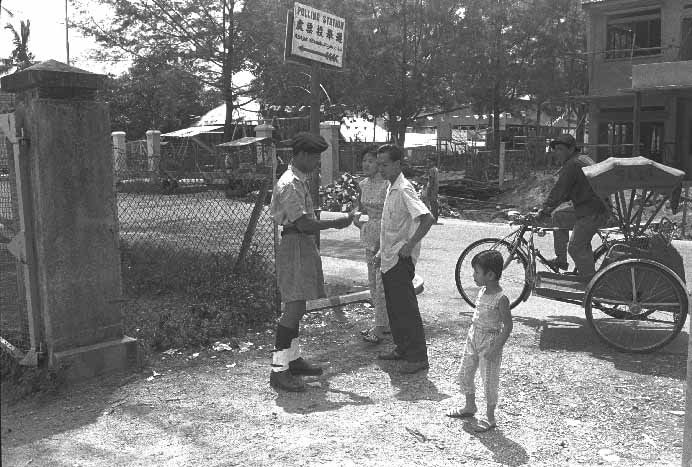
Ministry of Information and the Arts Collection, courtesy of National Archives of Singapore
Police officer checking the documents of voters at the entrance of polling station during Legislative Assembly Election 1963.
-
1966 & 1967 - Post-Independence By-Elections
The resignation of Barisan Sosialis Members of Parliament (MPs) resulted in the conduct of 12 by-elections for Bukit Merah (January 1966); Choa Chu Kang, Crawford and Paya Lebar (March 1966); Bukit Timah, Joo Chiat and Jurong (November 1966); Bukit Panjang, Havelock, Jalan Kayu, Tampines and Thomson (March 1967).
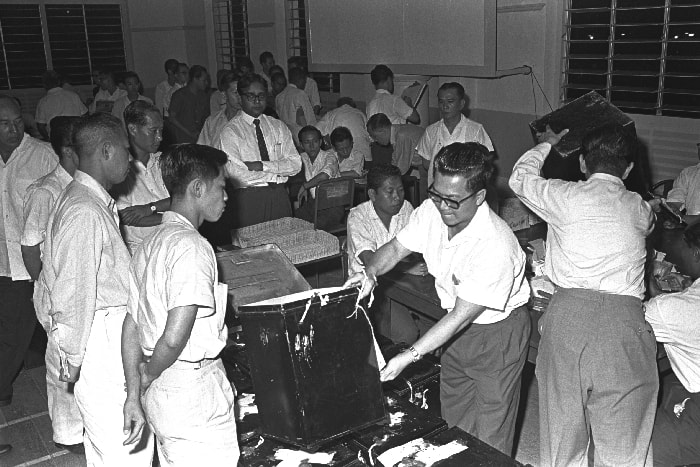
Ministry of Information and the Arts Collection, courtesy of National Archives of Singapore
Election officials pouring out cast ballots from ballot box onto table at counting centre, 1963.
-
1980 - Use of Void Deck Polling Stations for Voter-centricity
The Elections Department announced that for the first time the use of void decks in Housing Development Board (HDB) estates would be used as polling stations. This move brought polling stations closer to the electorate and made it even more convenient for them to vote.
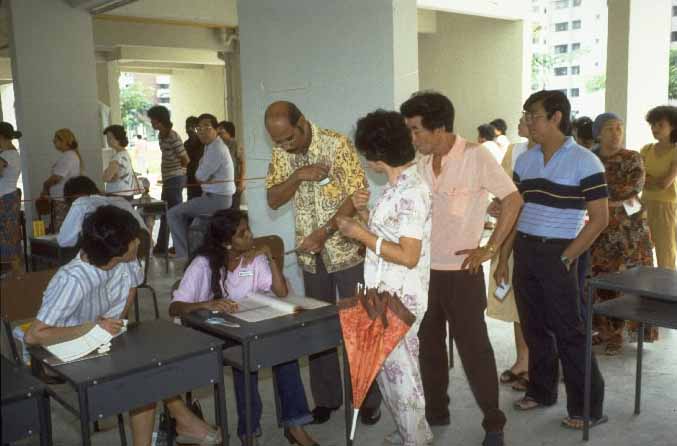
Ministry of Information and the Arts Collection, courtesy of National Archives of Singapore
Election officials could be seen verifying voter’s identity before issuing a ballot paper to the voter, 1984.
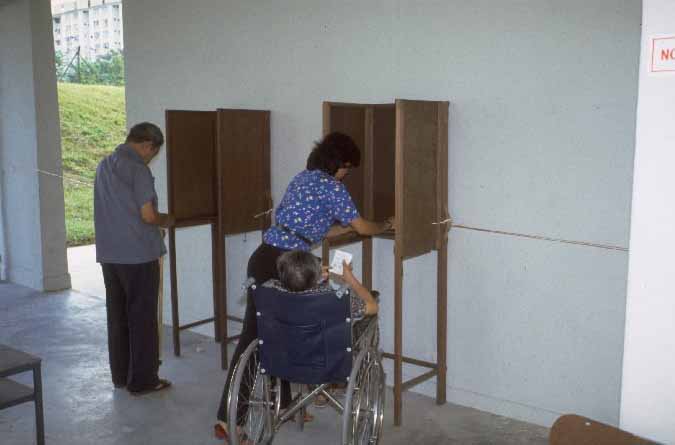
Ministry of Information and the Arts Collection, courtesy of National Archives of Singapore
Voters marking their ballot papers at a polling station situated at HDB void deck, 1984.
-
1988 - Introduction of Group Representation Constituencies
The 1988 General Election was the first in which Group Representation Constituencies (GRCs) were introduced. There were 13 three-member GRCs out of the total of 81 seats in Parliament. The Elections Department acted as the Secretariat for the newly-formed Malay Community and Indian and Other Minority Communities Committees that determined if the minority candidate belonged to the community he declared himself to belong to.
-
1989 - Namibian Elections Monitoring Mission
In October, responding to a last-minute request by the United Nations, Singapore despatched a 20-member team to Namibia to assist in monitoring its first post-independence elections. The team was led by Head of Elections Department, Mr Robin Chan, who spent about a month in Namibia. Police Superintendent, Mr Lee Kok Leong, was also appointed Chief Electoral Officer.
-
1991 - Establishment of Elected Presidency Scheme
The Constitution was amended to provide for a President elected by the people. The President has two important roles – first, as a symbol and unifier of a diverse and multi-racial Singapore; and second, as a custodian of our nation’s past reserves and the integrity of our public service.
-
1993
When President Wee Kim Wee's term ended in August, the Elections Department prepared itself for its first-ever Presidential Election. As part of the Presidential election process, the Elections Department served as Secretariat to the Presidential Elections Committee that issues the Certificate of Eligibility, which is required for a person to stand for election as a Presidential candidate. Polling Day was set for 28 August and former Deputy Prime Minister Ong Teng Cheong, was elected President. This was the largest turnout for an election since the 1963 General Election as all voters nation-wide were required to vote.
-
2011
The Elections Department was kept very busy this year as the 11th General Election and the 4th Presidential Election were held in the same year and barely four months apart.
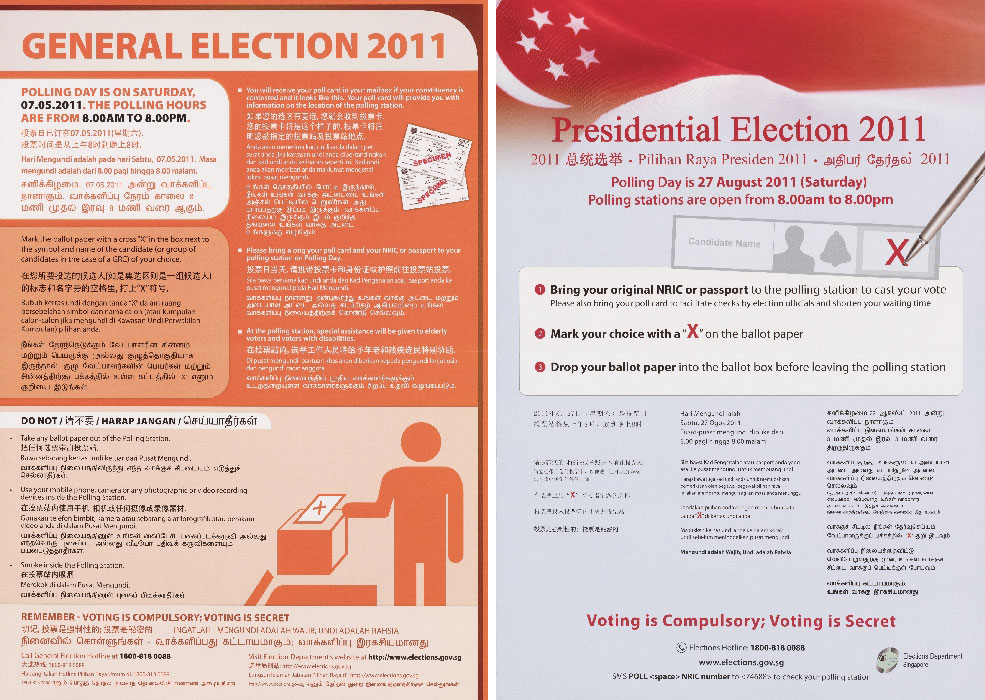
Elections Department Collection, courtesy of National Archives of Singapore
Public education posters used during General Election and Presidential Election, 2011.
-
2015
For the first time since independence, this General Election witnessed a full contest of all electoral divisions. 2,307,746 people cast their votes for this election.
-
2017 - First Reserved Presidential Election
This Presidential Election was an election reserved for candidates belonging to the Malay community. After the Constitution was amended to provide for 'reserved elections' following the Report of the Constitutional Commission of 2016, the Elections Department worked out the intricacies of the scheme within a tight time frame and operationalised it, including proposing amendments to the Presidential Elections Act.
In addition to serving as Secretariat to the Presidential Elections Committee, the Elections Department also serve as Secretariat to the Community Committee that issues the Community Certificate. On 13 September 2017, Madam Halimah Yacob was elected President, the first Malay President since 1970.
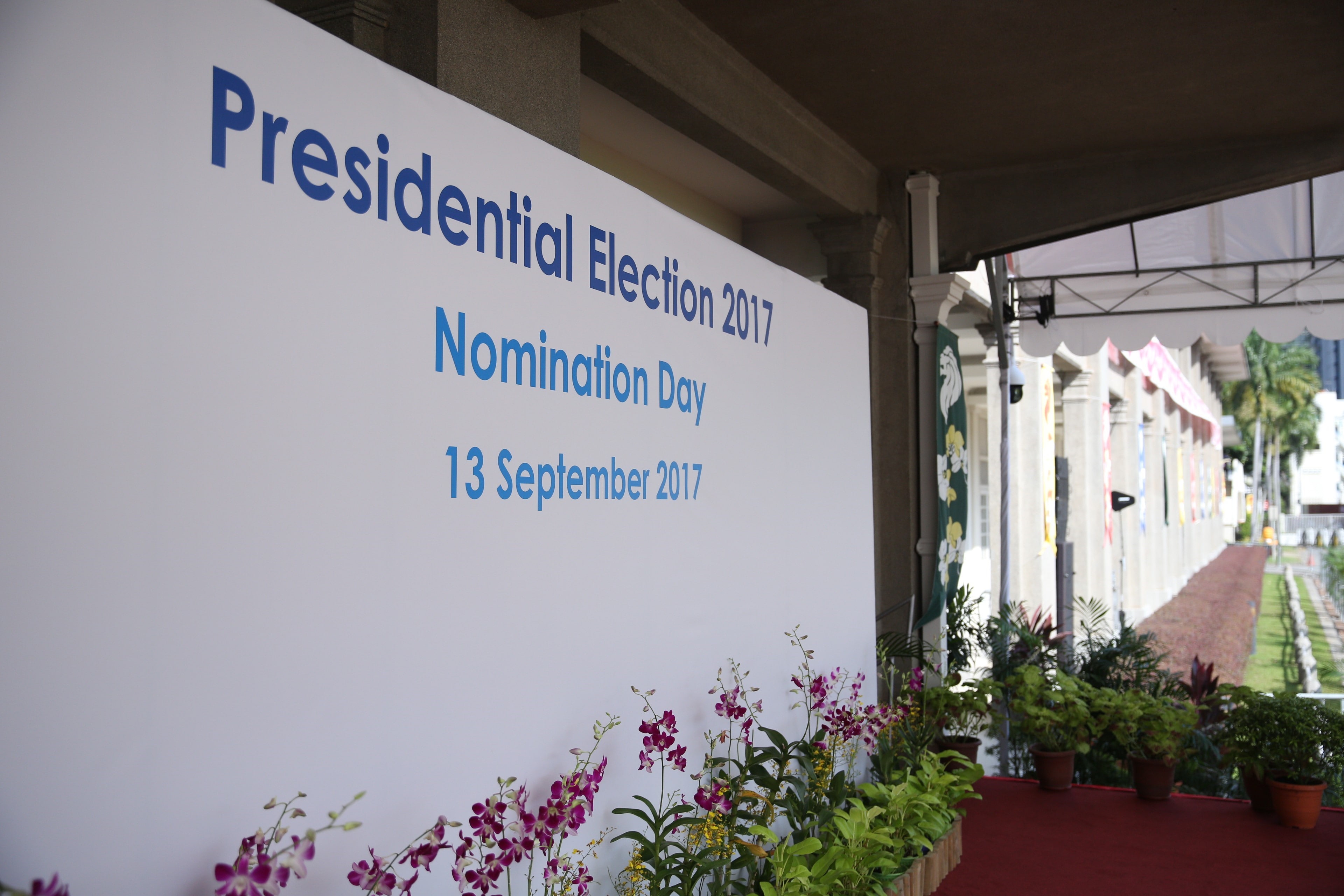
Nomination Centre for Presidential Election located at the People's Association, 2017.
